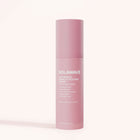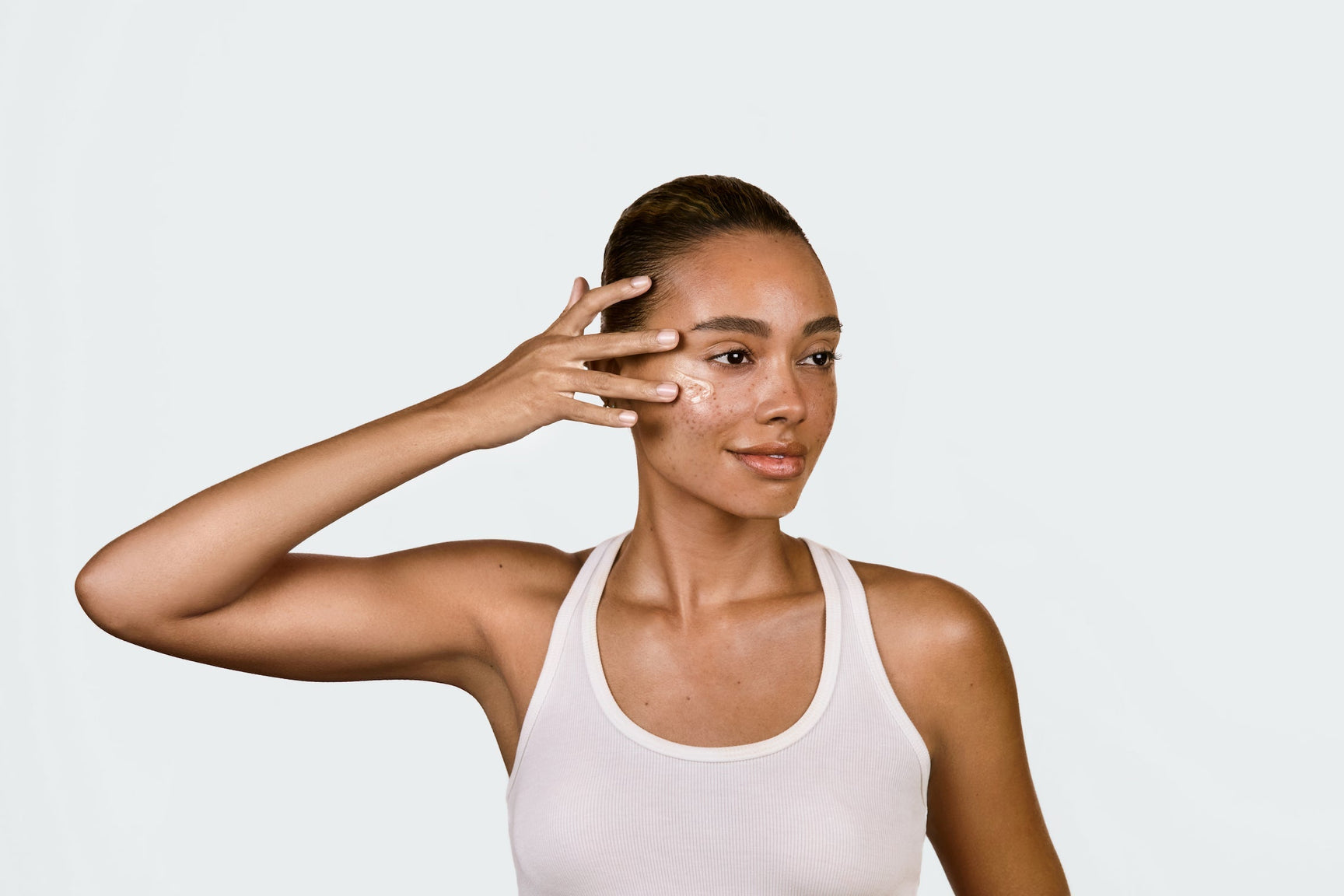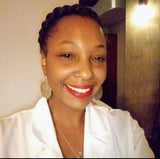

How To Get Clear Skin Naturally At Home
If your primary skin goal is clear skin, you may be surprised to learn that there are natural methods that can yield some pretty impressive results. With a handful of simple, effective practices as part of your daily routine paired with using the right skincare products and treatments, you can give your skin's appearance and health the clarifying boost it needs.
Let's talk about the best natural techniques for achieving clear skin at home, including how to incorporate advanced treatments like Red and Blue Light Therapy to elevate your skincare regimen.
Why Your Skin Isn't Clear
Unclear skin can result from a very wide variety of factors, each impacting the skin's health and appearance, and each affecting individuals differently. Excess oil production is the most common culprit behind breakout-prone skin, as it often leads to clogged pores and the appearance of pimples. On top of that, environmental pollutants like smog can also accumulate on the skin, exacerbating sebum issues and dulling the complexion. Hormonal fluctuations, diet, and genetics can also play a role, influencing oil production, acne-proneness, and skin sensitivity. Finally, improper skincare routines, such as using oil-based products (such as thick body sunscreen on the face) or neglecting regular cleansing, can disrupt the skin's balance and cause further buildup on the skin that can cause pimples to form.
Tips On How To Get Clear Skin Naturally At Home
Use Natural Face Masks
All-natural homemade masks can be made from ingredients like honey, aloe vera, and oatmeal to provide targeted nourishment and address specific skin concerns with ingredients you have in your pantry. As with any skincare formula you put on acne-prone or oily skin, ensure you're avoiding ingredients that are inherently fatty or oil-based.
Here are a couple of combos you might try:
- Oatmeal and Yogurt: Combine two tablespoons of finely ground oatmeal with one tablespoon of plain yogurt. Oatmeal gently exfoliates and soothes the skin, while yogurt contains lactic acid that also helps to exfoliate and promote cell turnover.
- Turmeric and Aloe Vera: Blend one teaspoon of turmeric powder with two tablespoons of aloe vera gel. Both turmeric and aloe vera have anti-inflammatory properties, with aloe vera also hydrating and calming the skin.
Get Enough Sleep
During sleep, the body undergoes essential repair and regeneration processes, which include skin cell renewal. Adequate rest helps reduce the appearance of dark circles, puffiness, and fine lines, contributing to a healthier, clearer-looking complexion. Quality sleep also helps regulate stress hormones, which can otherwise lead to skin issues such as pimples and redness. Ensuring you get sufficient sleep each night helps to support your skin's natural ability to rejuvenate and maintain its glow.
Manage Stress Levels
Chronic stress can trigger hormonal imbalances that lead to the appearance of pimples and other skin issues. While easier said than done, stress-reducing practices such as mindfulness, meditation, and regular physical activity can help you manage stress levels, and thus, manage the negative effects stress can have on skin. Lower stress levels support healthier skin by reducing the likelihood of inflammation and promoting a more even complexion. Not to mention, stress management is good for your overall well-being!
Avoid Touching Your Face
Touching your face over and over throughout the day can transfer dirt, oil, and bacteria from your hands into your pores. Minimizing this habit can reduce the risk of introducing irritants and contaminants to your skin. This includes picking at your face and popping pimples, too; on top of the damage you can do to your skin, pimple popping can spread the bacteria from inside of the pimple and also result in scarring.
Exercise Regularly
Physical activity boosts circulation, which helps deliver oxygen and essential nutrients to the skin, helping to keep it healthy and balanced. Exercise also supports the body's natural detoxification processes, aiding in the removal of toxins that can contribute to the development of pimples. To tack onto the stress section above, regular workouts can also help manage stress levels, which reduces those stress-related skin issues we mentioned earlier!
Follow a Consistent, Tailored Skincare Routine
Following a consistent skincare routine is fundamental for achieving clear skin naturally at home. A regular regimen tailored to your skin type ensures that your skin receives the necessary care and attention it needs to stay healthy and radiant. This routine typically includes cleansing, moisturizing, and protecting your skin daily, along with periodic treatments like exfoliation and masking (check out our step-by-step guide to a properly layered skincare routine here!)
Skincare Best Practices for Clear Skin
Cleanse Your Skin Regularly
Regular cleansing is a cornerstone of achieving clear skin naturally at home. It helps remove dirt, oil, and impurities that can clog pores and lead to pimples. Using a gentle cleanser suited to your skin type ensures that your skin remains balanced and hydrated. Consistent cleansing can also support the skin's natural renewal process, revealing a bright, energized complexion.
Our Hydrating Gel Cleanser works well in a clear-skin routine, formulated to cleanse the skin without stripping away essential moisture naturally produced by your skin. This gentle yet effective cleanser harnesses the power of Solabiome, our unique blend of prebiotics and probiotics that support the skin's natural microbiome. Infused with hydrating ingredients including Pro Vitamin B5, our cleanser helps your skin look plump and radiant right from the start of your routine!
How Often Should I Wash My Face for Clear Skin?
It's generally recommended to wash oily and/or acne-prone skin twice a day, once in the morning and once at night, to help maintain clear skin. Cleansing your face in the morning prepares your skin both for your other skincare products as well as for the day ahead, while evening cleansing removes the day's buildup of dirt and pollutants. For those with dry or sensitive skin, washing less frequently can help preserve the skin's natural oils and prevent further dryness or irritation. Opting for a gentle cleanser can help ensure that even with less frequent washing, your skin remains balanced and hydrated.
Try Blue Light Therapy for Clear Skin
Blue Light Therapy can be a powerful tool for achieving a clearer-looking complexion, particularly because of its effectiveness in combating pimples, breakouts, and inflammation.
Our Bye Acne 3-Minute Acne Spot Treatment is an FDA-cleared device, and harnesses the benefits of Blue Light Therapy to penetrate the skin and target acne-causing bacteria. This non-invasive treatment also utilizes Red Light Therapy to help reduce the appearance of inflammation and redness caused by pimples, promoting a clearer and healthier-looking complexion.
Gently Exfoliate Your Face
Exfoliating your face gently can help to remove impurities, dirt, and oil from your pores. Mild exfoliants can help remove dead skin cells, which can accumulate and clog pores, leading to pimples and a dull complexion. Exfoliation can also promote cell turnover and reveal fresher, healthier-looking skin.
Exfoliation can be done through two main methods: chemical and physical exfoliation.
Chemical Exfoliation: This method uses acids or enzymes to dissolve dead skin cells and promote cell turnover. Ingredients like alpha hydroxy acids (AHAs) and beta hydroxy acids (BHAs) penetrate the skin to unclog pores and remove impurities. AHAs, such as glycolic acid and lactic acid, are water-soluble and work on the skin's surface to improve texture and brightness. BHAs, like salicylic acid, are oil-soluble and can penetrate deeper into the pores, making them particularly effective for oily and acne-prone skin. Chemical exfoliation helps to renew skin without the need for abrasive scrubbing.
Physical Exfoliation: This method involves using granular substances or tools to manually remove dead skin cells from the surface. Common physical exfoliants include scrubs with fine particles like sugar, salt, or ground nuts, as well as tools like exfoliating brushes or sponges. Physical exfoliation helps to smooth the skin's texture and remove surface impurities, promoting a clearer complexion. It's important to choose gentle exfoliants to avoid irritation and damage to the skin barrier.
For oily or acne-prone skin, it's recommended to exfoliate two to three times a week to help remove excess oil and unclog pores; this helps maintain a clear complexion without over-irritating the skin. To gently exfoliate your face, choose a mild exfoliant with natural ingredients, and apply to clean, damp skin using smooth, circular motions, then rinse with lukewarm water. Pat your face dry with a soft towel and follow up with a hydrating moisturizer.
Hydrate Your Skin
Hydrating your skin with a light, non-clogging moisturizer is essential for clear skin. Proper hydration helps maintain balanced oil production, reducing the chances of clogged pores and the appearance of pimples. Our Nourishing Moisturizer is infused with hydrating ingredients including triple hyaluronic acid and a mushroom humectant to lock in moisture without clogging pores, helping your skin stay clear but nourished! Additionally, hydrating serums and creams can provide deeper nourishment, enhancing the skin's ability to retain water and avoid triggers for more oil production.
Use Gentle Skincare Products
Harsh ingredients can strip the skin of its natural oils, leading to irritation and dryness, and triggering the skin to produce more oil, which can then cause pimples to develop. Opting for products with soothing, natural ingredients can help maintain the skin's moisture balance and support its barrier function. Gentle formulations are also less likely to cause adverse reactions, making them suitable for all skin types, including sensitive skin that may also be acne-prone.
Conclusion
Achieving clear skin naturally at home means a combination of consistent skincare practices and solid self-care habits that work together to balance oily, acne-prone skin. Incorporating gentle exfoliation, natural face masks, and clarifying formulas into your routine supports your skin's health and radiance. Blue Light Therapy, in particular, can be a powerful tool for targeting pimples and reducing the appearance of acne, promoting a clearer complexion.
As we've discussed, there are many different factors that can contribute to blemishes and other imperfections in your skin. If you're still not seeing improvement after trying at-home remedies and changes to your skincare routine, consider consulting with a licensed skin professional like a dermatologist or licensed esthetician for more insight into what may be causing your skin concerns.
New to light therapy skincare treatments like Blue and Red Light? See what innovative skincare tools can do with our Before and Afters, or take our Skin Quiz to see which device is the best fit for you and your routine!
Sources:















